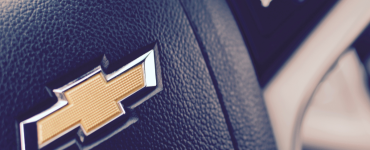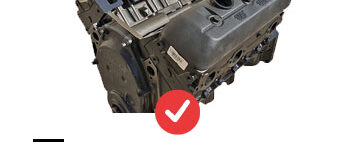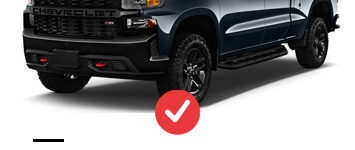3rd Gen Camaro: A Comprehensive Guide to the Iconic Muscle Car
The 3rd generation Camaro is a classic American sports car that was produced by Chevrolet from 1982 to 1992. It was designed to compete with other popular sports cars of the era, such as the Ford Mustang and Pontiac Firebird. The 3rd gen Camaro was known for its sleek and aerodynamic design, as well as its powerful engine options.
One of the most notable features of the 3rd gen Camaro was its use of advanced technology for its time. It was one of the first cars to use a computer-controlled engine management system, which allowed for more precise tuning and improved performance. Additionally, the 3rd gen Camaro was one of the first cars to feature a fully independent suspension system, which provided better handling and ride quality.
Overall, the 3rd gen Camaro is a beloved classic car that has a dedicated following among enthusiasts. Its combination of sleek design, advanced technology, and powerful performance make it a standout in the world of American sports cars.
Overview of 3rd Gen Camaro
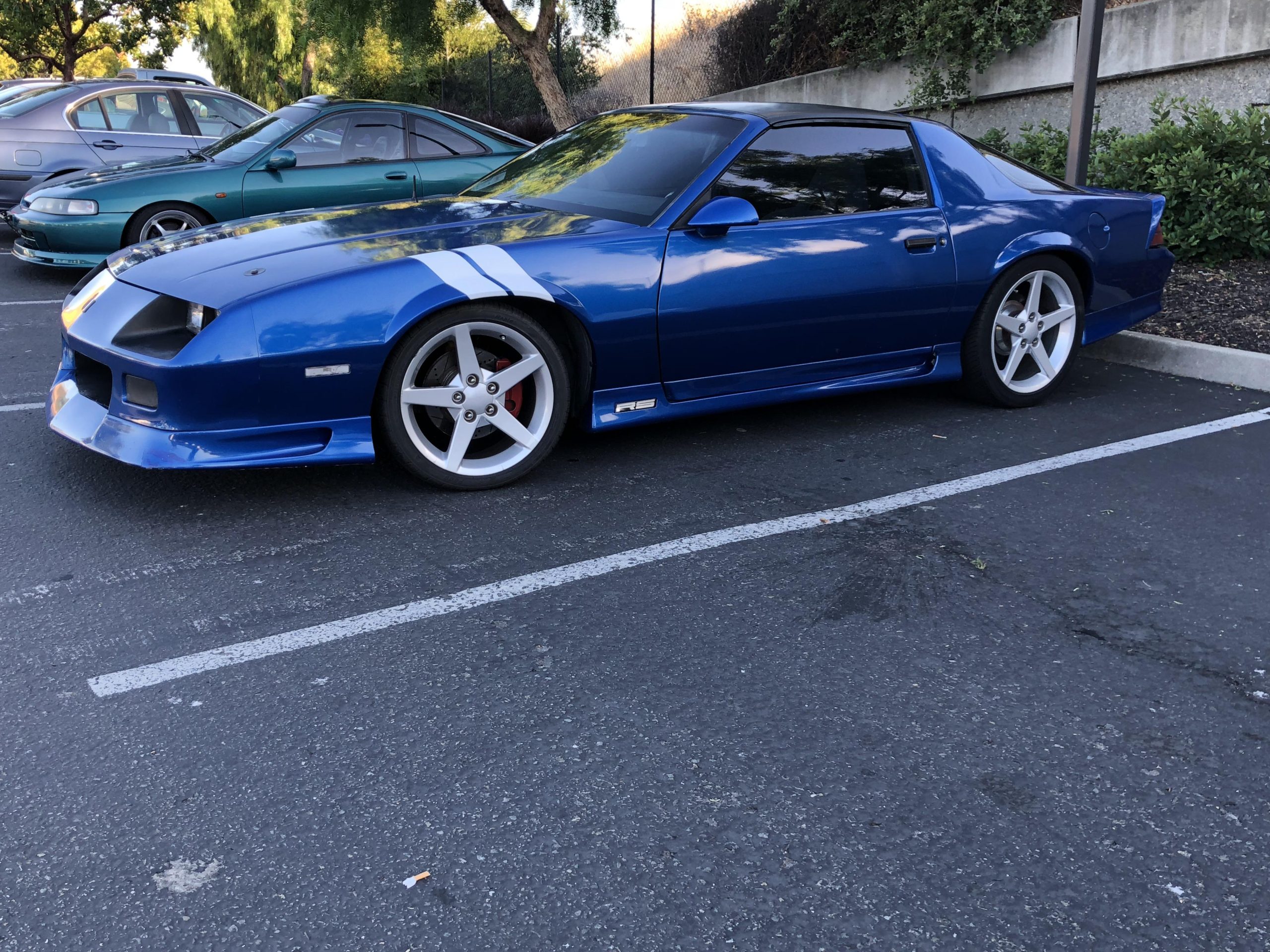
The third-generation Camaro, also known as the third-gen Camaro, is a sport coupe produced by Chevrolet from 1982 to 1992. It was built on the F-body platform, which was shared with the Pontiac Firebird. The third-generation Camaro was designed to compete with other muscle and pony cars of the era, such as the Ford Mustang and Dodge Challenger.
The third-gen Camaro was available in several different trim levels, including the base model, Berlinetta, Z28, and IROC-Z. The Z28 and IROC-Z were the high-performance models, featuring a 5.0-liter V8 engine that produced up to 215 horsepower.
The third-generation Camaro was known for its sleek, aerodynamic design, which was a departure from the boxy styling of its predecessor. It also featured a more modern interior with improved ergonomics and better visibility. The third-gen Camaro was also one of the first cars to feature a digital dashboard.
Despite its popularity, the third-generation Camaro faced some criticism for its handling and performance. However, it remains a popular choice among car enthusiasts and collectors today. Overall, the third-gen Camaro is an important part of Chevrolet’s history and a classic example of a muscle car from the 1980s.
Design and Aesthetics
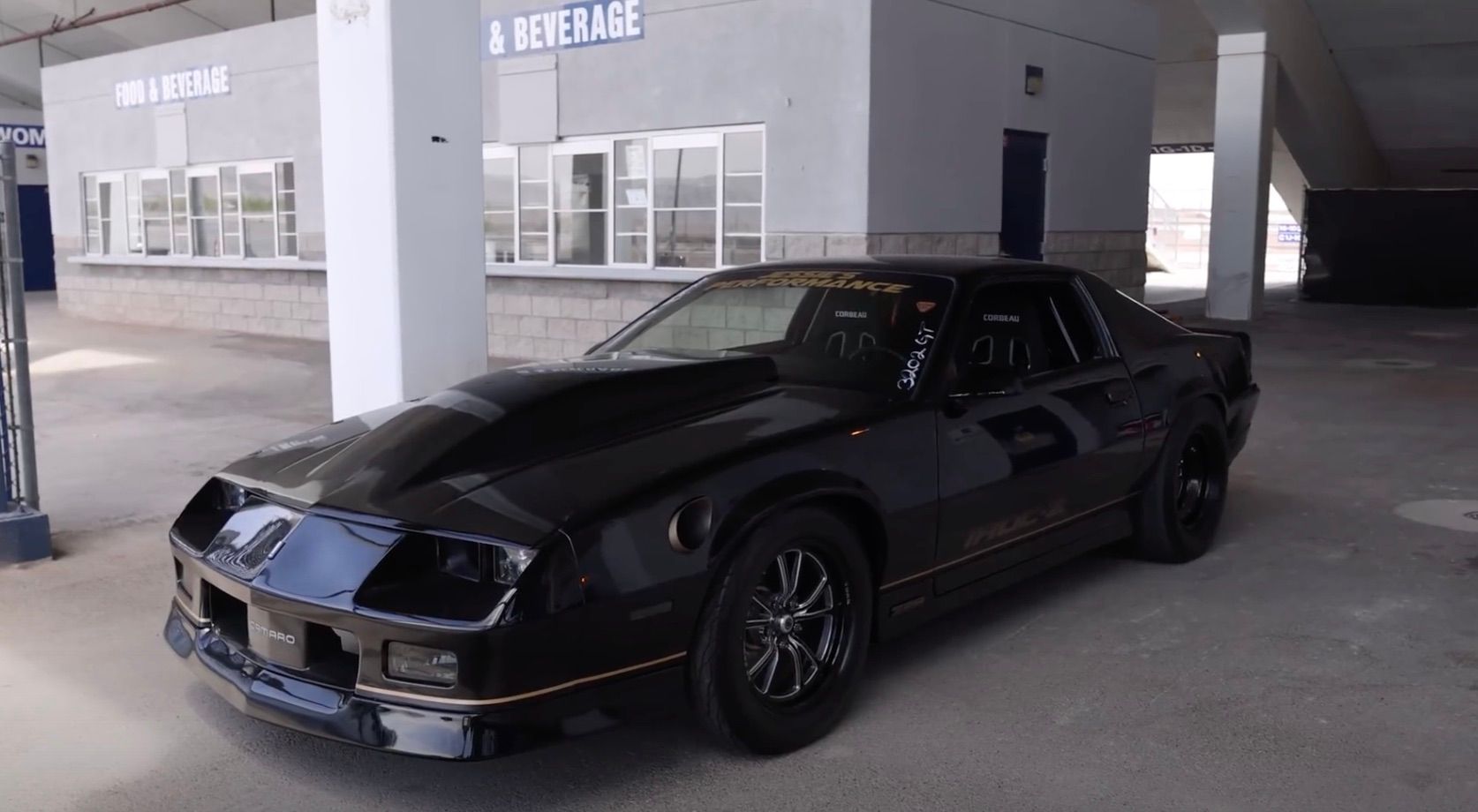
The third-generation Camaro was a significant departure from its predecessor, with a sleeker and more modern design. The car’s aerodynamic profile was the result of extensive wind tunnel testing, which helped to reduce drag and improve fuel efficiency.
Exterior Details
The Camaro’s exterior featured a long, sloping hood, a sharply raked windshield, and a short rear deck. The car’s rear spoiler was integrated into the design, providing both downforce and a distinctive look. The taillights were also redesigned, with a more modern and angular shape.
One of the most notable design elements of the third-gen Camaro was the use of ground effects. These were aerodynamic pieces that were added to the car’s bodywork to improve airflow and reduce lift. The ground effects included a front air dam, side skirts, and a rear valance panel.
Interior Details
The Camaro’s interior was also updated for the third generation, with a more modern and driver-focused design. The car featured a custom cloth interior, which was available in a range of colors and patterns.
The dashboard was redesigned, with a more angular and contemporary look. The instrument cluster was also updated, with a digital speedometer and a tachometer that could be customized to display different information.
Overall, the third-generation Camaro was a significant departure from its predecessor, with a more modern and aerodynamic design. The car’s exterior details, including the ground effects and rear spoiler, helped to improve performance and give the car a distinctive look. The interior was also updated, with a more modern and driver-focused design that included a custom cloth interior.
Models and Variants
The third generation Camaro was produced from 1982 to 1992 and featured several different models and variants. Each model had its own unique features and specifications.
Z28
The Z28 was the top-of-the-line model for the Camaro. It was known for its powerful engine and sporty design. The Z28 was first introduced in 1982 and was produced until 1992. It featured a 5.0-liter V8 engine and was available with either a four-speed automatic or five-speed manual transmission. The Z28 also had upgraded suspension and braking systems.
RS
The RS was a mid-level model for the Camaro. It was introduced in 1988 and was produced until 1992. The RS featured a 2.8-liter V6 engine and was available with either a four-speed automatic or five-speed manual transmission. The RS had a sporty appearance with ground effects and a rear spoiler.
Iroc-Z
The Iroc-Z was a special edition model that was introduced in 1985. It was produced until 1990 and was known for its performance and styling. The Iroc-Z featured a 5.0-liter V8 engine and was available with either a four-speed automatic or five-speed manual transmission. It also had a sport-tuned suspension and upgraded braking system.
Berlinetta
The Berlinetta was a luxury model for the Camaro. It was introduced in 1982 and was produced until 1986. The Berlinetta featured a 2.8-liter V6 engine and was available with either a four-speed automatic or five-speed manual transmission. It had a more refined interior with power windows, locks, and mirrors.
Overall, the third generation Camaro offered a range of models and variants to suit different preferences and needs. From the high-performance Z28 to the luxury-oriented Berlinetta, there was a Camaro for everyone.
Engine and Performance
V8 Engines
The third-generation Camaro was available with a range of V8 engines, including the 5.0L L69, 5.7L L98, and 5.7L LS1. These engines provided a significant boost in power and performance compared to the standard V6 engine. The L69 produced 190 horsepower and 240 lb-ft of torque, while the L98 produced 230 horsepower and 330 lb-ft of torque. The LS1, which was only available in the 1998 model year, produced 305 horsepower and 335 lb-ft of torque.
Tuned Port Injection
The third-generation Camaro was one of the first vehicles to feature tuned port injection (TPI), which was introduced in 1985. TPI improved fuel efficiency and performance by injecting fuel directly into the engine’s intake manifold. The system used a computer-controlled fuel injection system to precisely meter fuel to each cylinder, resulting in improved throttle response and overall performance.
Cross-Fire
The Cross-Fire engine was a unique option offered on the 1982 and 1984 Camaro models. It featured a dual throttle-body fuel injection system that was designed to improve fuel economy and emissions. However, the system was not well received by enthusiasts, as it was prone to reliability issues and did not offer significant performance gains.
L98 5.7L V8
The L98 5.7L V8 was the most powerful engine offered on the third-generation Camaro. It was introduced in 1987 and featured a tuned port injection system, as well as aluminum heads and a roller camshaft. The engine produced 230 horsepower and 330 lb-ft of torque, making it a popular choice among enthusiasts looking for a high-performance Camaro.
Overall, the third-generation Camaro offered a range of powerful V8 engines and innovative fuel injection systems that helped to improve performance and fuel efficiency. Whether you were looking for a reliable daily driver or a high-performance sports car, the third-generation Camaro had something to offer.
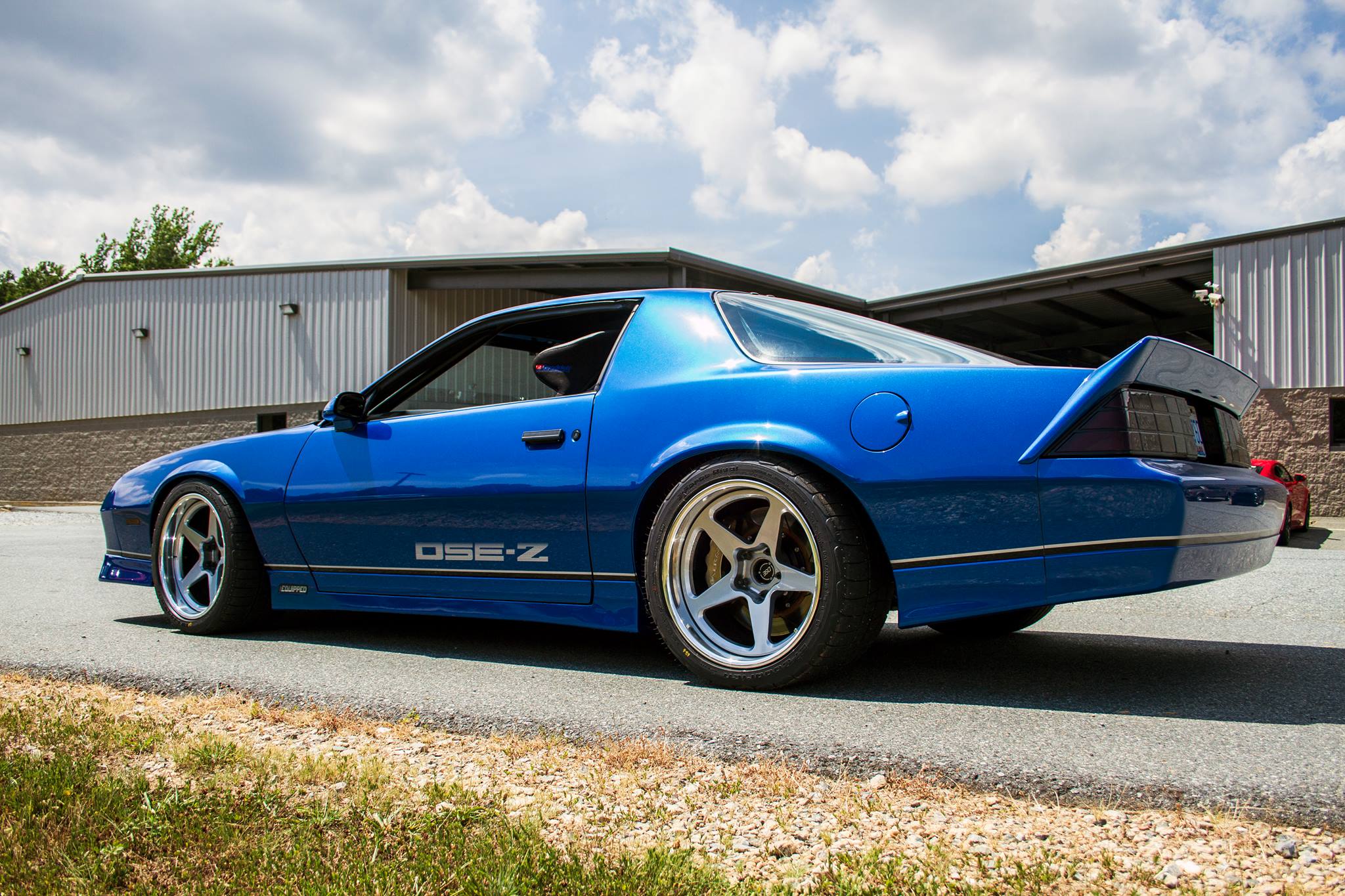
Chassis and Suspension
Frame
The third-generation Camaro’s frame was an F-body design, which means it was shared with the Pontiac Firebird. The frame was a unibody design, which means the body and frame were integrated into a single unit. This design provided increased rigidity and reduced weight.
The frame was made of high-strength steel and was designed to withstand the stresses of high-performance driving. It featured a front subframe that supported the engine and front suspension, and a rear subframe that supported the rear suspension.
Suspension
The third-generation Camaro’s suspension was designed to provide a balance of handling and comfort. It featured a front MacPherson strut suspension and a rear torque arm suspension.
The front suspension consisted of MacPherson struts, coil springs, and stabilizer bar. The MacPherson strut design provided a compact and lightweight suspension that was well-suited for performance driving. The coil springs provided a comfortable ride and the stabilizer bar helped to reduce body roll during cornering.
The rear suspension consisted of a torque arm design, which provided excellent traction and stability during acceleration. The torque arm was connected to the rear differential and the frame, and it helped to control the movement of the rear axle. The rear suspension also featured coil springs and stabilizer bar.
Rear Suspension
The third-generation Camaro’s rear suspension was designed to provide excellent traction and stability during acceleration. It featured a torque arm design that was connected to the rear differential and the frame. The torque arm helped to control the movement of the rear axle and provided excellent traction.
The rear suspension also featured coil springs and stabilizer bar. The coil springs provided a comfortable ride and the stabilizer bar helped to reduce body roll during cornering.
Overall, the third-generation Camaro’s chassis and suspension were well-designed and provided a balance of handling and comfort. The F-body design provided increased rigidity and reduced weight, while the MacPherson strut and torque arm suspension provided excellent handling and traction.
Special Editions and Packages
Pace Car
The 1982 Camaro was chosen as the pace car for the Indianapolis 500, and Chevrolet celebrated this with a special edition package. The pace car package included a distinctive two-tone silver and blue paint scheme, a special front grille, and unique decals. The interior featured silver leather seats with blue trim and a special commemorative plaque on the dashboard. The pace car package was available on both the Z28 and Berlinetta models.
Gold Accenting
In 1985, Chevrolet introduced a special edition Camaro with gold accenting. The package included gold striping on the hood, doors, and rear decklid, as well as gold “Camaro” lettering on the rear bumper. The interior featured gold trim on the seats, door panels, and dashboard. The gold package was available on both the Z28 and IROC-Z models.
16-Inch Wheels
In 1987, Chevrolet introduced 16-inch wheels as an option on the Camaro. These wheels were larger and wider than the standard 15-inch wheels, and they gave the car a more aggressive stance. The 16-inch wheels were available on both the Z28 and IROC-Z models.
Finned Aluminum Wheel
In 1988, Chevrolet introduced a special edition Camaro with finned aluminum wheels. These wheels were designed to resemble the wheels found on classic muscle cars from the 1960s. The package also included a special hood with a raised center section and a blacked-out grille. The finned aluminum wheel package was available on both the Z28 and IROC-Z models.
Overall, Chevrolet offered a variety of special edition packages for the third generation Camaro, including the pace car package, gold accenting, 16-inch wheels, and finned aluminum wheels. These packages allowed buyers to customize their Camaros and make them stand out from the crowd.
Comparisons and Rivalries
The 3rd Gen Camaro has been a fierce competitor in the American muscle car market since its introduction in 1982. Its main rivals were the Ford Mustang and the Pontiac Firebird. The Camaro was also compared to the Volkswagen GTI in terms of performance and handling.
The Camaro’s biggest rival was the Ford Mustang, which had been the best-selling muscle car in America for decades. The Mustang was known for its sleek design and powerful engines, but the Camaro was able to hold its own with its superior handling and advanced suspension system. The Camaro’s V8 engine was also more powerful than the Mustang’s, giving it an edge in straight-line acceleration.
The Pontiac Firebird was another popular muscle car that competed with the Camaro. The Firebird was known for its unique styling and powerful engines, but it lacked the handling and suspension capabilities of the Camaro. The Camaro was also more affordable than the Firebird, making it a popular choice for budget-conscious muscle car enthusiasts.
While not a traditional muscle car, the Volkswagen GTI was often compared to the Camaro due to its sporty handling and performance capabilities. The GTI was known for its nimble handling and turbocharged engine, but it lacked the raw power of the Camaro’s V8 engine.
Overall, the 3rd Gen Camaro was a formidable competitor in the American muscle car market. Its advanced suspension system and powerful engines made it a popular choice among enthusiasts, and it held its own against its main rivals, the Mustang and Firebird. While the Volkswagen GTI was a different type of car altogether, it was still considered a worthy competitor to the Camaro in terms of handling and performance.
Legacy and Impact
The third-generation Chevrolet Camaro, introduced in 1982, left a lasting impression on the automotive industry. With its sleek and aerodynamic design, the Camaro became an instant classic. Its popularity was fueled by its impressive performance and handling, making it a favorite among car enthusiasts.
The Camaro’s impact was not limited to the world of sports cars. The car was also delivered to law enforcement agencies across the United States, where it was used as a patrol vehicle. The Camaro’s speed and agility made it an effective tool for catching criminals on the run.
The Camaro’s legacy continues today, with many third-generation models still on the road. Its popularity has also inspired a thriving aftermarket industry, with countless companies offering performance upgrades and customization options for the car.
Overall, the third-generation Camaro has left a lasting impact on the automotive industry. Its sleek design, impressive performance, and versatility have made it a classic that will continue to be admired for years to come.
Restoration and Maintenance
Restoring and maintaining a 3rd Gen Camaro requires a certain level of expertise and attention to detail. Jim S, ASC, and other reputable restoration and maintenance shops can provide valuable assistance in this process.
One of the most important aspects of restoring a 3rd Gen Camaro is ensuring that the body is free from rust and other forms of damage. This can involve replacing panels, sanding, and repainting the car. It is also important to address any mechanical issues, such as problems with the Iron Duke engine or the 3-speed automatic transmission.
Regular maintenance is also essential to keep a 3rd Gen Camaro running smoothly. This includes changing the oil and other fluids, replacing worn-out parts, and checking the brakes and suspension. Owners of the hatchback body style should pay special attention to the rear hatch, which can be prone to leaks and other issues.
Overall, restoring and maintaining a 3rd Gen Camaro requires a combination of knowledge, skill, and attention to detail. With the right approach, however, it is possible to keep these classic cars running for many years to come.

